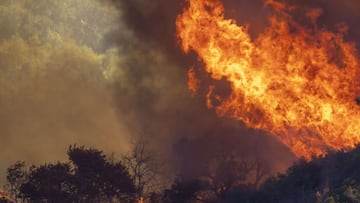When is the 2021 United National Climate Change Conference?
Countries prepare for the 2021 UN Climate Change Conference in Glasgow where they will have to communicate thier nationally determined contributions.


After a one-year delay, Glasgow will host the 2021 United National Climate Change Conference. The annual event, which forms part of the United Nations Framework Convention on Climate Change, had to be canceled last year due to the pandemic. 2020 was the first year the conference was not held since 1995.
This year the event will take place from 31 October through 12 November and is especially important as it marks five years since the signing of the Paris Climate Accords. The 2015 agreement calls on countries who have signed on to “communicate” to their nationally determined contributions every five years. In Glasgow, parties to the Paris Agreement will be expected to report on their progress in meeting their contributions, and many may choose to announce more ambitious targets. Already this year, more than fifty countries have updated their nationally determined contributions.
What are nationally determined contributions?
The Paris Climate Accords are a first step in establishing a global response in the fight against climate change. Each country that signs onto the agreement is required to submit nationally determined contributions (NDCs), which represent policy changes, measures, and actions that will be taken to reduce emissions or in any way assist in reaching the global targets outlined in the agreement.
These commitments are designed to keep global warming under 2℃ and, if possible, 1.5℃.
However, the strength of the agreement relates directly to the ability of the members to fulfill their commitments, as the NDCs are not binding.
Will NDCs and the Paris Climate Accords help the world keep warming under 2℃?
At this point, it seems unlikely.
.#G20 states not on track to limit global warming to 1.5 degrees Celsius: Report @anadoluagency https://t.co/qX6fPBhKJO
— Alvaro Rodriguez (@AJRodriguezUN) October 14, 2021
The world is barreling towards 1.5℃, and while the Paris Agreement aims to avoid this increase in temperature, most scientists do not believe the NDCs are strong enough to do so.
Should warming to these levels not be averted, the International Panel on Climate Change has warned that the consequences could be catastrophic. According to the 2018 IPCC report, the world could see the death of anywhere between 70 to 90 percent of coral reefs as sea temperatures rise at 1.5℃ threshold is surpassed. Around 1.2 billion people rely on coral reef ecosystems as a food source or for their livelihood.
In the tropics, the rapidly warming planet could see crop yields drop by three percent, rising to seven should warming not be able to be kept under 2℃. In light of these facts, the former chair of the IPCC, Sir Robert Watson, was quoted saying that to make it under 2℃, “Countries need to double and triple their 2030 reduction commitments to be aligned with the Paris target.”
A May report released by the World Meteorological Organization estimated a “90% likelihood of at least one year between 2021-2025 becoming the warmest on record.” Additionally, researchers predict a 44 percent chance that the global average annual temperatures will hit 1.5℃ within five years. Compared to the report from 2020, the possibility of this occurring has doubled based on the new climate data available.
UN's weather agency, the World Meteorological Organization, has warned that over 5 billion people could face drinking water shortage in 2050#climatechange@SaroyaHem brings you the details
— WION (@WIONews) October 7, 2021
For more videos, visit: https://t.co/dm7SyBIpO6 pic.twitter.com/ZlO4ouu4Oh
How quickly is the planet warming?
Predicting the rate at which the planet is warming is extremely complicated. One aspect that poses serious challenges is feedback loops.
Take the ocean, for example.
Like when a cook begins to boil water for pasta, it takes time to reach its boiling temperature. The ocean has been warming slowly for thousands of years, and as the atmosphere becomes more polluted and heat on the planet is trapped, the ocean is beginning to warm more quickly. The question remains, how fast...
While scientists may not have answered that question, the impacts of said warming have been observed.
The National Atmospheric and Oceanic Administration reported that in the artic “since 1979, ice extent has shrunk by 40 percent.” Sea ice can help keep global warming levels down because it can reflect between “50-70 percent of incoming solar energy,” while ocean water only reflects around six percent.
Scientists already anticipate that we could see a September where all arctic sea ice has melted before freezing over again in the winter within the next quarter-century. Shortly after that, the Arctic could be ice-free for months at a time, leading to further warming of the ocean.
On land, the story is not much better.
Related stories
Due to intentional human-caused burning and climate change, one-fifth of the Amazon has been lost. As the climate warms, fires can become more intense, releasing more carbon dioxide into the atmosphere, perpetuating another feedback loop.
Should another fifth of the world’s largest tropical rainforest be lost, “a phenomenon known as “dieback” could be seen, which is "where the forest dries beyond human rescue, inviting more wildfires and releasing more carbon.”
- Glasgow
- Escocia
- Conferencias internacionales
- Cumbre del clima
- Calentamiento global
- Reino Unido
- Cumbres internacionales
- Cmnucc
- Cambio climático
- Europa occidental
- Relaciones internacionales
- Acuerdos ambientales
- ONU
- Protección ambiental
- Problemas ambientales
- Europa
- Organizaciones internacionales
- Relaciones exteriores
- Medio ambiente

